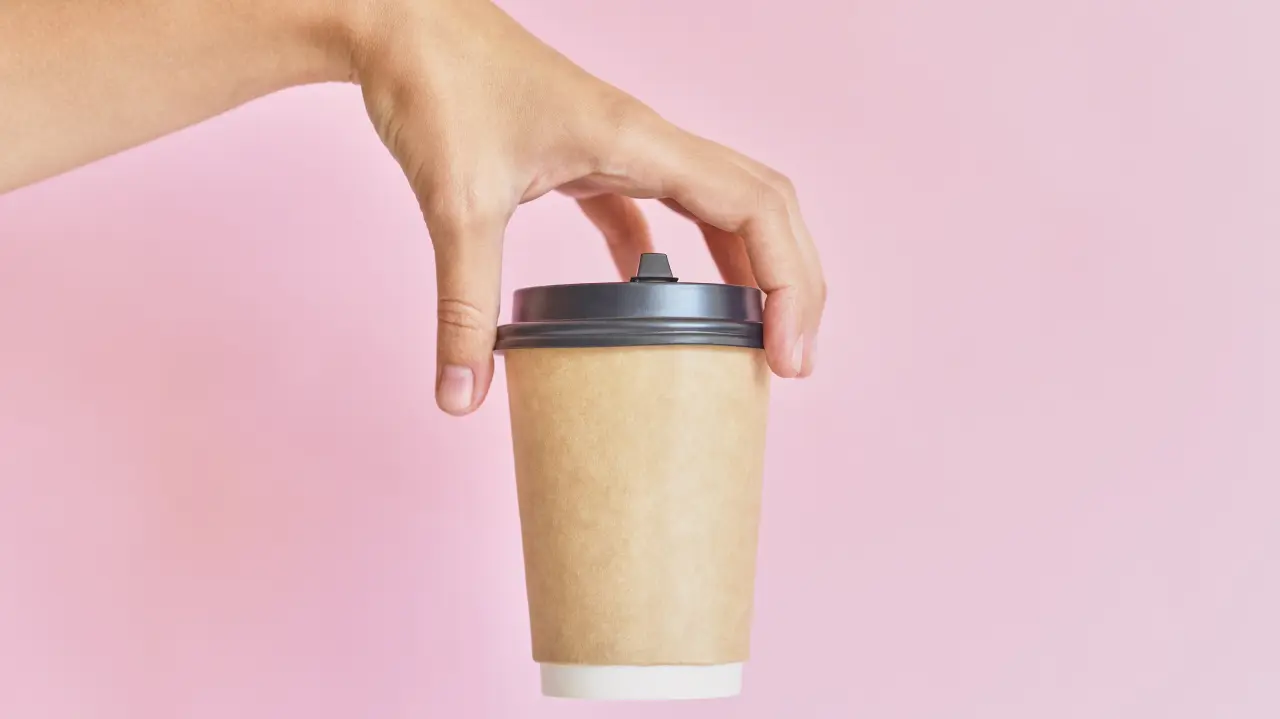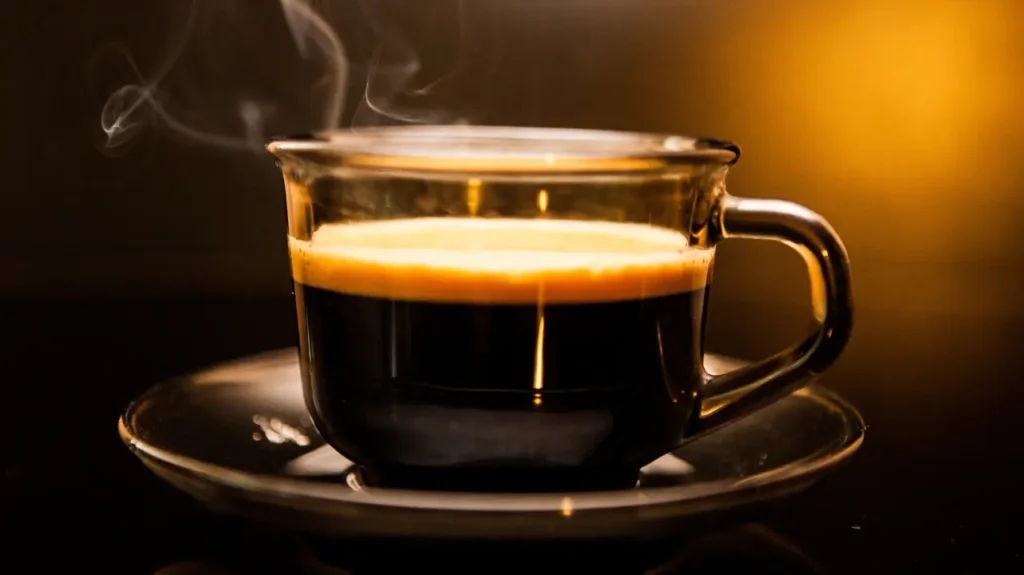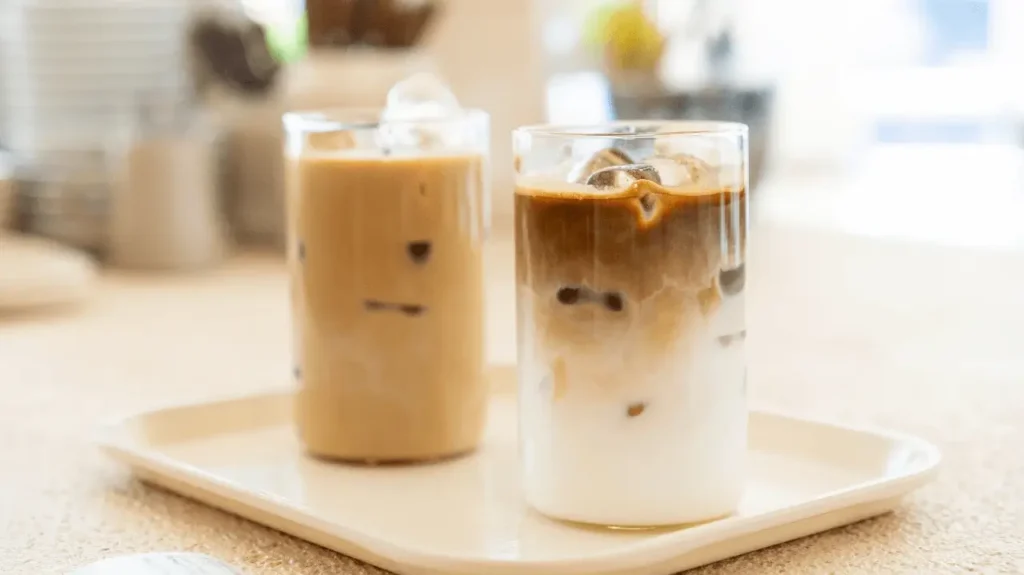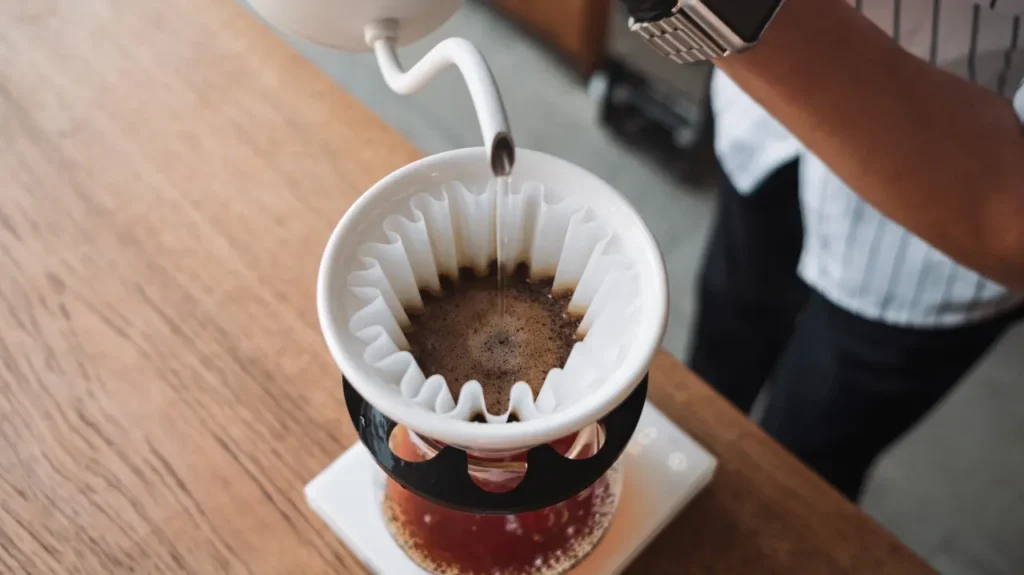Brewing coffee for 20 people shouldn’t feel like solving a math puzzle. But let’s face it: how much coffee for 20 cups? This question trips up even seasoned hosts.
Too little coffee? Weak Brew. Too much? Bitter disaster. After digging through barista blogs, coffee forums, and expert tips (and testing a lot of bad batches), I’ve cracked the code.
This guide skips the jargon. Instead, you’ll get straight answers: exactly how much coffee to use, how to adjust for taste, and pro tricks to avoid rookie mistakes.
Whether hosting a family brunch or keeping the office awake, you’ll master the 20-cup Brew.
Defining the Coffee Cup
Here’s the problem: your coffee maker plays tricks with measurements. That “cup” button? It’s not your kitchen’s 8-ounce measuring cup.
Most machines use 5 or 6 ounces instead. Why? Blame old-school traditions; European espresso cups were tiny, and the habit stuck.
This guide uses 6 ounces per cup, which is the specialty coffee standard. Why? Two reasons:
- It matches the “golden ratio” (1:18 coffee-to-water) for a balanced flavor.
- Bigger batches (like 20 cups) taste better with this measure; smaller “cups” risk over-extraction.
So, 20 cups = 120 ounces (or 3,549 mL) of water. But check your machine’s manual! Some brands (cough, Mr. Coffee, cough) use 5-ounce cups.
If yours does, 20 cups = 100 ounces, a vast difference.
For larger gatherings, see our guide on how much coffee for 30 cups.
Quick Fix for 5-Ounce Machines:
Need 20 cups, but your maker uses 5-ounce measurements? Multiply your coffee by 1.2. Example: If a 6-ounce recipe needs 200g of coffee, use 240g instead.
Don’t guess. A wrong cup size turns your Brew into murky dishwater or bitter sludge. Measure once, and brew perfectly forever.
The Golden Ratio
Your coffee’s flavor hinges on one rule: 1 gram of coffee to 18 grams of water. This ratio isn’t random; it’s science meeting centuries of trial and error.
In 1600s Europe, cafés nailed this balance by accident, using small cups and eyeballed scoops.
Today, labs confirm it: 1:18 extracts just enough sweetness and acidity, leaving bitter oils behind.
For caffeine specifics, explore how much caffeine is in Vietnamese coffee.
For 20 cups (120 ounces of water), this means 200 grams of coffee, the sweet spot between bold and bland.
But coffee is personal. Craving intensity? Tighten the ratio to 1:15 (think rich, chocolatey notes). Risk? Overstepping into bitterness. Want a lighter sip? Try 1:20.
Danger?
Weakness if your grind’s too coarse. The 1:18 base works everywhere: drip machines hum. Happily, French presses brew evenly, and pour-overs shine.
Here’s the catch: even perfect ratios fail with stale beans or tap water. Fresh beans (roasted within 2 weeks) release flavors smoothly.
Filtered water? It’s the silent hero; no chlorine or minerals to clash with your Brew.
How Much Coffee for 20 Cups: Breakdown
Let’s cut the confusion. You need coffee for 20 people, and you’re staring at your maker like a spaceship. Here’s the breakdown without the calculator drama:
Start with 20 cups x 6 ounces = 120 ounces of water. Convert that to grams (because coffee loves precision). Water’s easy: 1 milliliter = 1 gram. So 120 ounces ≈ of 3,549 grams of water.
The golden ratio is 1 gram of coffee to 18 grams of water. Divide 3,549 by 18. You’ll get ≈197 grams. But here’s the barista’s secret: round up to 200 grams. Why? Two reasons:
- A tiny 3-gram difference won’t wreck 20 cups; it’s like missing one bean in a sack.
- Scoops lie. A “standard” scoop is 10 grams, so 20 scoops = 200 grams. Easy to remember.
But wait, what if your machine uses 5-ounce cups? Disaster? Nope. For 20 cups (100 ounces of water), you’d need 167 grams. Round to 170 grams. Still simple.
Adjusting Ratios for Personal Preference
The 1:18 ratio is your safety net, but coffee isn’t one-size-fits-all. Want a bolder punch? Crank it to 1:15. For 20 cups, that’s 240 grams of coffee.
It’s like turning up the volume: deeper chocolate notes, heavier body. But tread carefully, steep too long, and bitterness crashes the party.
Prefer a gentle sip? 1:20 (180 grams) softens the edges, letting floral or fruity beans shine. Risk? If your grind’s too coarse, it’ll taste like flavored water.
Brew method matters most:
- French press fans lean toward 1:15; immersion brewing needs more coffee to avoid sourness.
- Pour-over purists stick to 1:18 for clarity.
- Drip machines forgive 1:17 to 1:19, depending on the crowd’s taste.
Pro tip: Keep a coffee journal. Note the ratio, grind size, and taste. Did you find a winner at 1:16.5? Scribble it down.
Your future self will thank you during brunch chaos.
Measuring Accurately
Scales win. Why? Coffee isn’t flour. A scoop of light roast (dense, like pebbles) weighs more than the oily dark roast (fluffy, like cereal).
Grind size?
Finer grounds pack tighter; a “scoop” of espresso grind could be 12 grams, while coarse French press is 8. Chaos in a spoon.
For 20 cups, even tiny errors multiply. Example: Scooping dark roast? Twenty scoops might give you 180 grams instead of 200.
Your “bold” Brew becomes a lukewarm disappointment. Scales fix this. A $10 kitchen scale guarantees 200 grams, which means 200 grams, whether using fine drip grind or chunky cold Brew.
Explore affordable scales recommended by Coffee Research Institute.
No scale? Here’s the hack: Calibrate your scoop. Measure 10 grams of your beans (at your grind) once.
Mark the scoop’s fill line with a Sharpie. Now you’ve got a custom tool.
Pro truth: Online forums obsess over scales because consistency builds trust. Serve 20 people with weak coffee once, and they’ll never forget. Scales? They’re your reputation’s bodyguard.
Brewing Methods and Their Ratios
Coffee isn’t loyal to one ratio; it flirts with your brewer. Here’s the cheat sheet:
Pour-over (V60, Chemex): The 1:16–1:18 range isn’t random. Water races through grounds once, so less coffee (like 220g for 20 cups) keeps acidity bright and clean.
Go lower (1:16) for fruit-forward beans and higher (1:18) for chocolatey blends.
French Press: Immersion brewing is a soak party. Grounds swim freely, so bump the ratio to 1:15–1:17 (240g coffee for 20 cups).
This balances the long, steep, mellowing bitterness while keeping the body thick.
Drip Machines: Most default to 1:18 (200g for 20 cups), but brands play favorites. Mr. Coffee might prefer 1:17 and Breville 1:19. Check the manual or test with small batches first.
Cold Brew (for crowds): Here’s the outlier: 1:8. For 20 cups (120 oz water), you’ll need 500g coffee. Prefer iced? Try our Nespresso iced coffee method.
Yes, it’s a bean apocalypse, but it demands 12–24 hours of steeping.
Grind size is the wingman: French press needs coarse grounds (like breadcrumbs), pour-over medium (sea salt).
Wrong grind?
Even perfect ratios taste broken.
Additional Factors Influencing Taste
Your coffee ratio sets the stage, but these factors steal the spotlight:
Grind Size: Think of it as a timer. Finer grinds (like table salt) extract fast, great for espresso’s 30-second shot, and risky for drip machines.
Coarse grinds (breadcrumbs) slow things down, perfect for the French press’s 4-minute steep.
Pro tip: For 20 cups in a drip maker, go slightly coarser and prevent bitter over-extraction when water lingers.
Water Temperature: Too hot (over 205°F)? Burns coffee tastes like ash. Too cold (under 195°F)? Sour, unfinished. Sweet spot: 200°F.
No thermometer?
Boil water and wait 30 seconds. Forget this step; your 20 cups swing between the campfire and lemon juice.
Bean Freshness: Coffee peaks 7–14 days post-roast. After that? Flavors fade to cardboard. Whole beans stay lively longer, and they grind right before brewing.
Stale beans at a big gathering? Tragedy in a carafe.
Water Quality: Tap water’s chlorine or lime? It’s like cooking pasta in dish soap. Filtered water lets flavors sing.
Worried about dental health? Read is black coffee bad for your teeth? For 20 cups, impurities multiply; don’t risk “weird” aftertaste whispers.
The Quiet Saboteurs:
- Brew time: French press left plunging for 10 minutes? Bitter takeover.
- Altitude: High elevation? Water boils below 200°F; adjust the grind finer.
- Humidity: Stale beans absorb moisture and are always stored airtight, always.
Master these, and your 20 cups become a legend.
Practical Tips for Large Batches
Brewing 20 cups of coffee isn’t just about dumping beans and water into a machine; it’s a delicate balancing act.
Start by respecting your equipment’s limits. Overstuffing your drip maker’s filter basket is like cramming too many clothes into a suitcase; water pools on top, creating uneven extraction.
This “channeling” leaves some grounds bone-dry and others drowned, resulting in a half-strong, half-watery disappointment carafe.
If your machine struggles with 20 cups, split the Brew into two smaller batches. Consistency beats convenience here.
Temperature is your silent partner. Large batches lose heat fast, so preheat everything. Run hot water through your machine’s empty basket and carafe before brewing.
A cold carafe sucks warmth from the coffee, leaving it lukewarm and lifeless.
For pour-over enthusiasts, this means working quickly, using multiple cones, and recruiting a helper to keep each Brew under four minutes.
Slow pours lead to over-extracted bitterness; rushed ones taste weak. Teamwork saves the day.
Grind fresh, but grind smart. Grinding 200 grams of beans in one go can overheat your grinder, toasting the beans before they even hit the water.
For grind time tips, see how long to grind coffee beans. Pulse in smaller batches, letting the blades cool between rounds.
Noisy?
Yes. But burnt coffee smells worse than the noise annoys. Use a kitchen timer, coarse for French press (like breadcrumbs), medium for drip (sea salt), and fine only if you’re serving espresso drinkers.
Water is the unspoken variable. Machines lie about measurements. The “20 cups” marker might hold 18. A measuring jug will pour 120 ounces (3,549ml) into the reservoir.
Trusting the machine’s lines risks a weaker brew, and guests will notice.
When the brewing starts, stay vigilant. For drip machines, place a second carafe under the spout once the first is full.
This “decoy” catches overflow, so you’re not mopping countertops mid-brunch. For the French press, plunge slowly; a hurried press stirs up sludge.
Serving matters as much as brewing. Leaving 20 cups on a warmer for over 30 minutes invites sourness as oxygen attacks the coffee.
Transfer it to thermal carafes or insulated flasks in small batches. No thermals? Reheat gently on the stove; never microwave unless you enjoy the taste of regret.
Finally, do a dry run. Brew five cups the day before. Test the ratio, grind, and timing. Adjust if needed. Your crowd deserves a flawless pot, not a caffeinated experiment.
Pro Wisdom: The secret to 20 perfect cups? Treat coffee like a live concert, plan the setlist, tune the instruments, and rehearse.
Common Mistakes to Avoid
Brewing 20 cups magnifies every error, and tiny missteps can become giant disasters. Let’s tackle the big ones:
Stale Beans: Coffee isn’t wine. It doesn’t age gracefully. Beans peak 7–14 days post-roast. After that? Oils evaporate, leaving cardboard flatness.
Check roast dates, not just expiry. Serving stale coffee to 20 people? It’s like gifting expired milk, awkward.
Grind Size Roulette: Too fine? Bitter overkill. Too coarse? Watery letdown. For drip machines, medium grind (like sand) works.
French press?
Coarse (breadcrumbs). Guess wrong, and your 20 cups swing between tar and tea.
Skipping the Preheat: Cold equipment is a flavor thief. A chilly carafe or basket “shocks” the Brew, dropping temperature mid-extraction.
Result?
Sour, uneven coffee. Fix: Run hot water through your machine before adding grounds. Treat it like preheating an oven.
Overcrowded Filters: Stuffing 200g into a small basket? Water pools on top, tunneling through cracks (channeling).
Half the coffee drowns; half stays dry. For 20 cups, use a commercial-sized basket or split it into two batches. No one wants a murky middle layer.
Tap Water Tragedies: Chlorine, lime, or iron in water? They bully delicate coffee oils. Fix: Filtered water isn’t optional for large batches, and impurities scale up, too.
Ignoring the Bloom (Pour-Over): Dry grounds repel water. Pouring all 120 ounces at once? Expect uneven extraction.
Quick fix: Pour just enough to wet the grounds, wait 30 seconds, then continue.
The “Set It and Forget It” Sin: Walk away during brewing, and you’ll miss clues. Is the drip machine sputtering?
Adjust the grind next Time. Is the French press plunging too fast? Sediment city. Stay close.
Reheating Ruin: Microwaving cooled coffee? It scorches flavors. Instead, it can be brewed in smaller batches or used in thermal carafes.
Dirty Equipment: Old oils in machines or French presses turn rancid. Learn about cleaning coffee gear when using large equipment.
Pro tip: Clean with Cafiza tablets monthly. Residue whispers “burnt” into every cup.
Assuming Ratios Scale Linearly: Doubling a 10-cup recipe doesn’t always work. Larger batches need tweaks, like coarser grinds or adjusted ratios. Test first.
Mythbusting Coffee Ratios
Myth 1: “More Coffee = Stronger Flavor”
Truth: Overloading your ratio doesn’t make coffee “strong”; it makes it bitter. Strength comes from extraction, not volume.
Too much coffee (1:10) overworks the water, yanking harsh oils and acids. For 20 cups, stick to 1:18. Want intensity? Try a darker roast, not more grounds.
Myth 2: “All Beans Work with 1:18”
Light roasts (dense, acidic) need slightly less coffee (1:17) to avoid sourness. Oily dark roasts? They hide bitterness, so 1:18 holds.
But altitude and processing matter too: high-grown beans extract slower, grind finer, and don’t drown them.
Myth 3: “Boiling Water is Best”
Boiling water (212°F) scorches delicate beans, creating ashy flavors. Ideal range: 195–205°F. No thermometer? Boil, then wait 45 seconds.
Exception?
Light roasts thrive at 205°F to crack open their tight structure.
Myth 4: “Pre-Ground is Fine for Big Batches”
Pre-ground coffee loses 60% of its aromas in minutes. For caffeine alternatives, see does decaf coffee taste different?
For 20 cups, that’s 20x the disappointment. Grinding fresh is non-negotiable. No grinder? Buy beans and ask your local café to grind them that day.
Myth 5: “Ratios Don’t Change with Brew Time”
Cold brew steeps for 12+ hours, so it uses a 1:8 ratio. Espresso? 25 seconds demands 1:2. Time and ratio are partners; ignore one, and the other rebels.
Myth 6: “Filter Type Doesn’t Affect Ratios”
Metal filters (French press) let oils through, enriching the body, and stick to 1:15. Paper filters (pour-over) trap oils, needing 1:18 for clarity.
Switch filters without adjusting ratios? Say hello to mud or emptiness.
Myth 7: “Tap Water is Always Fine”
Minerals in water (like magnesium) boost extraction. But chlorine or sulfur? They weaponize bitterness.
For 20 cups, filtered water isn’t a luxury; it’s a shield against mutiny.
Scaling Your Coffee Recipe for Flexibility
Coffee ratios aren’t just for 20 cups; they’re your passport to brewing 5 cups or 50 without panic. The golden rule?
Water volume dictates everything. Let’s break it down:
Start with your trusted 1:18 ratio (1g coffee to 18g water). For 10 cups (60 ounces of water), you’d need 100g of coffee. For 15 cups (90 ounces), aim for 150g.
Scaling to 25 cups (150 ounces)? 250g coffee keeps the balance. These numbers aren’t random; they’re your ratio’s best friends.
But here’s the twist: bigger batches demand sharper attention. A 5-cup brew forgives a 2-gram error. For 50 cups? A 20-gram mistake swings the flavor.
Use a scale religiously; eyeballing 250g is like freehanding a mural.
When to bend the rules:
- Small batches (1–5 cups): Tighten the ratio to 1:17. Less water means faster heat loss and slightly more coffee counters under extraction.
- Jumbo batches (30+ cups): Open up to 1:19. Massive volumes risk over-extraction as water lingers in the machine.
Grind size follows the scale:
- Brewing 50 cups in a commercial urn? Go slightly coarser than usual. Water takes longer to pass through, and finer grinds over-extract.
- Making a single cup? Slightly finer ensures full flavor in a quick pour.
Pro tip: Write your ratios on a cheat sheet. Tape it inside your cabinet. “10 cups = 100g, 20 cups = 200g…” becomes your caffeine bible.
The “But Why?” Factor:
Ratios scale linearly because extraction is a percentage game. Ten grams of coffee in 180ml water behaves like 100g in 1,800ml.
But equipment limits break this purity. Home machines struggle with 30+ cups, split batches, or upgrade gear.
Cold Brew Exception: Scaling Cold Brew? It’s a rebel. For 20 cups (120 oz water), you need 500g of coffee (1:8 ratio). But for 40 cups, don’t double-check your steeping vessel’s depth.
Too deep?
Stir halfway to prevent mold (yes, really).
Frequently Asked Questions
I don’t have a scale. Can I still brew 20 cups right?
Yes, but with a caveat. A standard scoop holds ~10g of coffee, so 20 scoops ≈ 200g. But scoops lie; dark roast flakes weigh less than dense light roast. For safety, overfill each scoop slightly and level it off. Better yet, borrow a scale from a baking friend. Precision matters most with big batches.
Does roast level change the ratio?
Light roasts (dense, acidic) extract slower. Instead of changing the ratio (stick to 1:18), grind finer to expose more surface area. Dark roasts (oily, bold) hide bitterness; stick to 1:18 but avoid overstepping.
What about cold brew for 20 people?
Cold Brew is a beast. Use a 1:8 ratio, 500g coffee for 120oz water. Steep for 12–24 hours, then dilute with water/milk. Unlike hot coffee, it’s forgiving and steeps longer for a more potent brew, but never less than 12 hours.
How do I keep beans fresh for large batches?
Buy whole beans and store them in an airtight container with a CO2 valve (like coffee bags). Please keep it in a dark cupboard, not the fridge (humidity kills flavor). Grind only what you need. Pre-ground? Freeze in small packs, but thaw once; repeated freezing creates moisture.
Learn more about Can you put hot coffee in a glass cup? (spoiler: storage matters!).
Should I brew one big batch or multiple small ones?
Depends on your gear. Drip machines handle 20 cups if their basket fits 200g of coffee. Pour-over? Split into 2–3 batches to control brew time. French press? Brew once, but plunge slowly to avoid sludge.
Can I reuse coffee grounds for a second batch?
Never. Used grounds taste like bitter sawdust. For 20 cups, plan; it is better to brew extra than risk a desperate do-over.
Why does my 20-cup batch taste weaker than my usual 4 cups?
Large batches expose weak links, stale beans, uneven grinds, or a tired machine. Clean your gear, check bean freshness, and test grind size. Volume magnifies flaws you’d miss in smaller brews.
What if my guests want different strengths?
Brew a base 1:18 ratio. Serve with an espresso shot for DIY “Americanos” or hot water to dilute. Flexibility beats brewing multiple pots.
How do I keep beans fresh for large batches? The National Coffee Association shares storage best practices.
Conclusion
The question “How Much Coffee for 20 Cups” isn’t about math; it’s about confidence. Start with 200 grams of coffee (1:18 ratio), then tweak. Stronger?
Add 10 grams. Lighter? Subtract 10. Your kitchen, your rules.
But ratios are just the start. Grind size? Match it to your method. Water quality? Filtered wins. Fresh beans? Non-negotiable.
These details turn “good enough” into “Where’d you learn to brew like this?“
Remember: Every coffee master once drowned a filter or underfilled a carafe. What matters? You tried, adjusted, and served something real.
You’re ready, armed with science and a splash of instinct.
Hosting brunch, fueling an office, or caffeinating a crowd, your 20 cups will hum with flavor.
Trust the process, taste as you go, and never fear a tweak. Coffee is a journey, not a destination.




